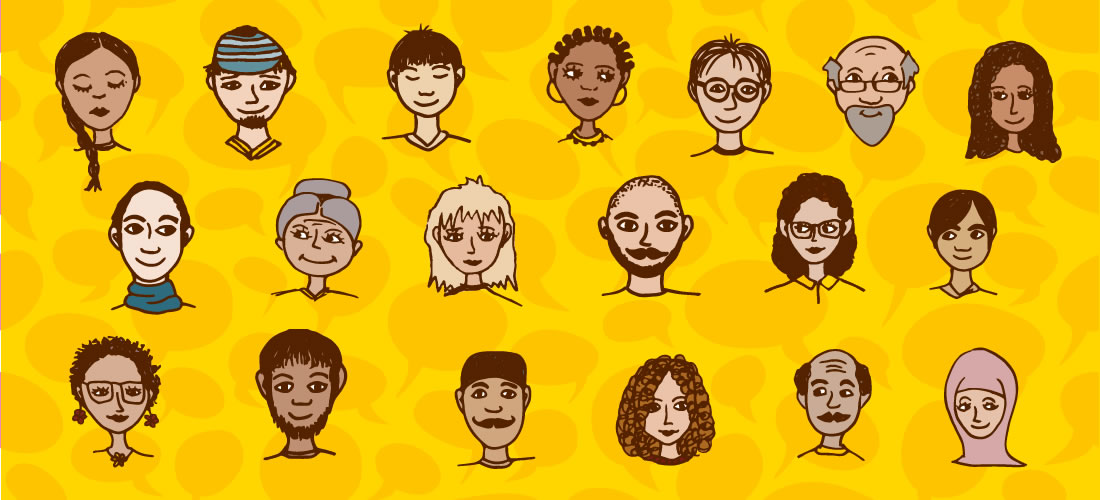“I’m sorry. I messed up. I was wrong.”
These words aren’t easy for most of us to say. Even when we see how we might have erred, we typically don’t want to acknowledge it.
So what happens when I become aware of an implicit bias I have? Perhaps I have acted unfavorably toward someone based on their appearance.
What if my organization begins to open its eyes to unconscious biases that have negatively impacted certain groups of employees? What do we do next?
Before we do anything at all, we need focus on acknowledgement.
We All Have Implicit Biases ‒ It’s Time to Acknowledge It
In my last blog on this topic, I talked about the journey of awareness. On the journey, we might become aware that our brains are wired for bias. We might learn from research that shows us how certain groups are more favored or less favored. We might develop awareness and empathy based on how implicit bias has personally impacted a colleague.
But it is much easier to acknowledge bias in others than to acknowledge our own implicit biases. (Me? My organization? I don’t have a problem with this, do I?)
With implicit bias, our defensiveness is often magnified. Why?
Most people:
- Want to see themselves as a fair person who treats people equally.
- Don’t want to be labeled as a racist, bigot, homophobe, sexist, etc.
For many action-oriented leaders of organizations, it’s tempting to try to move from awareness (learning about bias) straight to action. This skips a critical step: acknowledgment.
Three Ways to Take the Tough Step of Acknowledging Bias
What can organizations do to take the step from awareness to acknowledgment, before moving to action?
1. As leaders, acknowledge the problem
Many keystrokes have been devoted to debating in their Philadelphia coffeeshop. But it’s hard to debate one thing: CEO Kevin Johnson was quick to acknowledge the problem. In his initial statement following the incident, he said:
Creating an environment that is both safe and welcoming for everyone is paramount for every store. Regretfully, our practices and training led to a bad outcome—the basis for the call to the Philadelphia police department was wrong.
When the NAACP issued a travel advisory for American Airlines last year, CEO Doug Parker could have cited all the things American does to foster an inclusive environment. But instead, he chose to listen. He also reminded over 120,000 American Airlines employees of their purpose as an airline:
We fly over borders, walls and stereotypes to connect people from different races, religions, nationalities, economic backgrounds and sexual orientations. We make the world a smaller, more inclusive place.
In both cases, leaders avoided defensiveness and acknowledged the problem, contrasting the situation with the organization’s values.
2. Set the stage for safe dialogue, where acknowledgment is not condemned
It’s important to stress:
- We all have biases.
- Having biases does not make you a bad person.
- Our goal isn’t to eradicate our biases.
- Our goal is to become more aware of our biases, acknowledge them, and act from this awareness.
When explicitly stating these rules of engagement, people are more likely to begin the process of exploration and acknowledgment.
3. Expand the terms
Biased. Judgmental. Misogynistic. Racist.
These terms are all pretty charged. When hearing them, many people put up their defensive boxing gloves. Instead of asking, “How are you judgmental of others?” consider something like, “What are some common assumptions you make based on appearance?” Instead of asserting, “We are biased against the LGBTQ community here,” say something like, “I sense we respond differently when two women who are holding hands approach the counter.”
When organizations and individuals adjust their language, they help decrease defensiveness and increase the potential for acknowledgment.
Acknowledging My Own Implicit Bias
Earlier in my career, when facilitating a focus group in Chicago, I made a snarky remark about whether we could move the tables due to “union rules.” In reflection, I began to acknowledge what had previously been unconscious: I made judgments about union employees that reflected a personal bias. Acknowledging this bias to myself and then to others was a critical step to taking more control over it. (This is only one of my own biases that I now acknowledge. I’d be happy to discuss others in a more personal setting than this blog, for those interested.)
With an increased awareness, coupled with genuine acknowledgment, I could then move to action: What do I do about this?
In the next blog in this series, I’ll share more about what action can look like for organizations and individuals. If you have a story about why acknowledging implicit bias is so hard for your organization, I’d love to hear from you.






